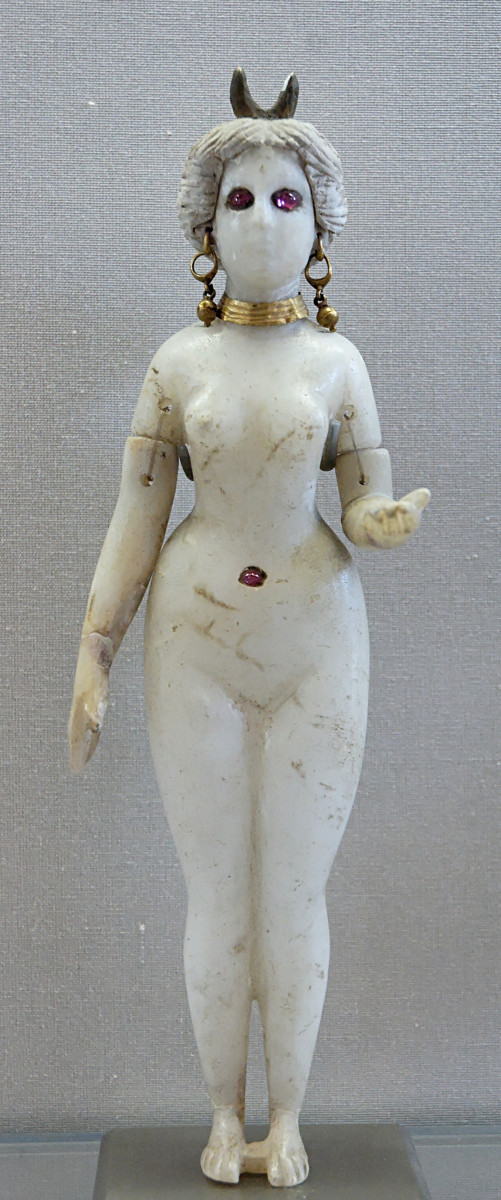11 May. The Israelites worship Baal and Ashtoreth
“The angel of the LORD went up from Gilgal to Bokim and said, ‘I brought you up from Egypt and led you to the land I promised to give your ancestors. I said, “I will never break my agreement with you. But you must not make an agreement with the people who live in this land. You must destroy their altars.” But you did not obey me…’”
“'Now I tell you, "I will not force out the people in this land. They will be your enemies, and their gods will be a trap for you."’”
“After the angel gave Israel this message from the LORD, they cried loudly. So they named the place Bokim [meaning ‘crying’]. There they offered sacrifices to the LORD…”
“After these people [Joshua and his generation] had died, their children grew up and did not know the LORD or what he had done for Israel. So they did what the LORD said was wrong, and they worshipped the Baal idols.”
“They stopped following the LORD, the God of their ancestors who had brought them out of Egypt. They began to worship the gods of the people who lived around them, and that made the LORD angry. The Israelites stopped following the LORD and worshipped Baal and Ashtoreth.”
“The LORD was angry with the people of Israel, so he handed them over to robbers who took their possessions. He let their enemies who lived around them defeat them; they could not protect themselves.”
“When the Israelites went out to fight, they always lost, because the LORD was not with them. The LORD had sworn to them this would happen. So the Israelites suffered very much.”
(Joshua 2:1-5, 10-15)

After the death of Joshua, the angel of the LORD went from Gilgal to Bochim condemning the Israelites for worshipping foreign gods. The people listened and cried in shame. So the place was called Bochim (meaning 'those who cry').
But after a short while, the younger generation of Israelites forgot how God had led their ancestors out of slavery in Egypt, and they lost their faith. They turned away from the LORD once again, and worshipped the local gods – the Baals and Ashtoreth. As a result of this disobedience, the Israelites’ lands were plundered and Israelite captives were sold into slavery.
The Canaanite god Baal was believed to be the son of El, the senior god of the Canaanites (‘El’ is the Semitic word for ‘god’ shared by the Israelites and the Canaanites). ‘Baal’ means ‘Lord’ or ‘Master’.
The gods (or ‘Baalim’) of individual cities were often known by the name of the place, hence the Baal of Peor (see Numbers 25:3), Baal Meon (see Joshua 13:17), and Baal Hazor (see 2 Samuel 13:23). But the word ‘Baal’ also became a personal name to indicate the supreme fertility god of the Canaanites – the ‘Lord of the Earth’, who was said to ensure good crops in this agricultural society.
The Baals were endemic in Canaan when the Israelites arrived, but the spread of Baal worship owed much to inter-marriage with foreign women who worshipped the Baals. The most celebrated example of this was when King Ahab married the Phoenician princess Jezebel in around 874BC. Jezebel imported the trappings of her own religion (including the priests of Baal Melquart – the Baal of Tyre, her own hometown) and persecuted the prophets of Yahweh (see 1 Kings 16:30-33).
Baal worship not only involved ritual prostitution and degrading sexual practices common to many fertility cults, but it also included child sacrifice (see Jeremiah 19:5). It was often practiced in association with the cult of the goddess Ashtoreth.
Ashtoreth, the consort of Baal, was a Canaanite fertility goddess who had attracted the worship of some Israelites ever since the invasion of Canaan in c.1406BC (see Judges 2:10-13 & 10:6). In earlier days, Ashtoreth Karnaim was a centre of Ashtoreth worship in the time of Abraham (see Genesis 14:5).
The worship of Ashtoreth had become widespread among the Israelites by the time of Samuel in c.1024BC (see 1 Samuel 7:3-4). After King Saul was killed by the Philistines at the Battle of Mt Gilboa in c.1011BC, his armour was placed in the Temple of Ashtoreth at Beth Shean (see 1 Samuel 31:8-10).
The excavation of clay images showing a naked female at numerous archaeological sites confirms that the worship of Ashtoreth was widespread during the time of the ‘Judges’ and throughout the reigns of the kings of Israel and Judah. As well as male and female ritual prostitution, the cult of Ashtoreth also involved child sacrifice.
The photo (by Marie-Lan Nguyen) shows a statuette of Ashtoreth in the Louvre Museum in Paris.
You can read more about Baal worship @ https://www.thebiblejourney.org/biblejourney2/48-the-jewish-world-of-the-old-testament/foreign-gods/
